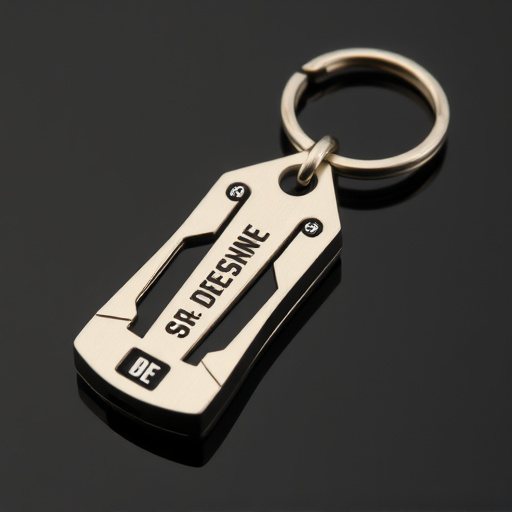In many places, carrying self-defense keychains is strictly regulated by law. It's crucial to understand local regulations regarding sharp objects vs. non-lethal options, as well as specific restrictions on weapon types and sizes. Prioritize safety and effectiveness when choosing a keychain, considering build quality, deployment speed, locking mechanisms, and additional features like flashlights or pepper spray. Practice responsible carrying and use non-lethal force only as a last resort, leaving the scene and contacting authorities if necessary. Always stay informed about permitted self-defense keychain tools to avoid legal issues and ensure personal safety.
In today’s diverse and sometimes uncertain world, having a portable keychain weapon can offer added peace of mind. However, navigating legal permits and restrictions is crucial for responsible self-defense. This article delves into understanding these legalities, highlighting key features that ensure safe and effective use, and providing best practices for carrying and utilizing these permitted self-defense keychain tools. By the end, you’ll be equipped with knowledge to make informed decisions about personal safety.
- Understanding Legal Permits and Restrictions
- Key Features for Safe and Effective Self-Defense Keychains
- Best Practices for Carrying and Using a Portable Keychain Weapon
Understanding Legal Permits and Restrictions
In many regions, the legality of carrying a keychain weapon for self-defense is subject to strict regulations and permits. It’s crucial to understand the legal framework surrounding permitted self-defense keychain tools before considering their acquisition and use. Each country or state has its own set of laws dictating what constitutes an acceptable self-defense device and where it can be carried. These rules often differentiate between sharp objects like knifes, bladed tools, and non-lethal options such as pepper spray or tasers.
To ensure compliance, individuals should research and familiarize themselves with the local laws. This includes understanding restrictions on size, capacity, and the type of weapon allowed. Some jurisdictions may require permits for certain self-defense keychain tools, while others might have specific exemptions for personal protection. Staying informed about these legal permits and restrictions is paramount to avoiding legal repercussions and ensuring the safe use of a keychain weapon for self-defense purposes.
Key Features for Safe and Effective Self-Defense Keychains
When considering a keychain as a self-defense tool, safety and effectiveness should be paramount. Key features to look for in a permitted self-defense keychain include a sturdy build quality that can withstand impact and rough handling. The weapon should be designed with ease of use in mind, featuring simple mechanics that allow for swift deployment without complicating the user’s ability to defend themselves.
Additionally, the keychain should incorporate reliable locking mechanisms to prevent accidental discharge and ensure control during combat. Sharp, durable edges or spikes are ideal for disarming assailants, but they must be designed with safety in mind, reducing the risk of injury to the user or bystanders. Moreover, consider keychains that offer multiple defense options, such as those equipped with flashlights or pepper spray, enhancing their versatility and effectiveness in different self-defense scenarios.
Best Practices for Carrying and Using a Portable Keychain Weapon
When carrying a portable keychain weapon, it’s crucial to prioritize safety and responsible handling. Always ensure that your chosen self-defense tool is permitted by local laws and regulations, as possessing hidden weapons may be restricted in certain areas. Keep your keychain weapon easily accessible yet discreetly hidden, avoiding ostentatious displays that could attract unwanted attention. Practice proper grip techniques and familiarize yourself with the weapon’s mechanism to ensure quick and effective deployment when needed.
During use, remain calm and assess the situation before employing the keychain weapon. Aim for non-lethal areas like pressure points or legs to disable an aggressor without causing severe harm. After defending yourself, immediately leave the scene and contact authorities if necessary. Regularly maintain and inspect your keychain weapon to ensure it remains functional, and consider carrying a backup plan for added security in case of failure or loss.
Portable keychain weapon safety features are essential considerations for anyone looking to carry self-defense tools legally and effectively. Understanding local laws, prioritizing user-friendly designs, and adhering to best practices can ensure these compact devices serve their intended purpose without causing harm or legal issues. Permitted self-defense keychain tools offer a sense of security, but responsible carrying and informed use are paramount.
